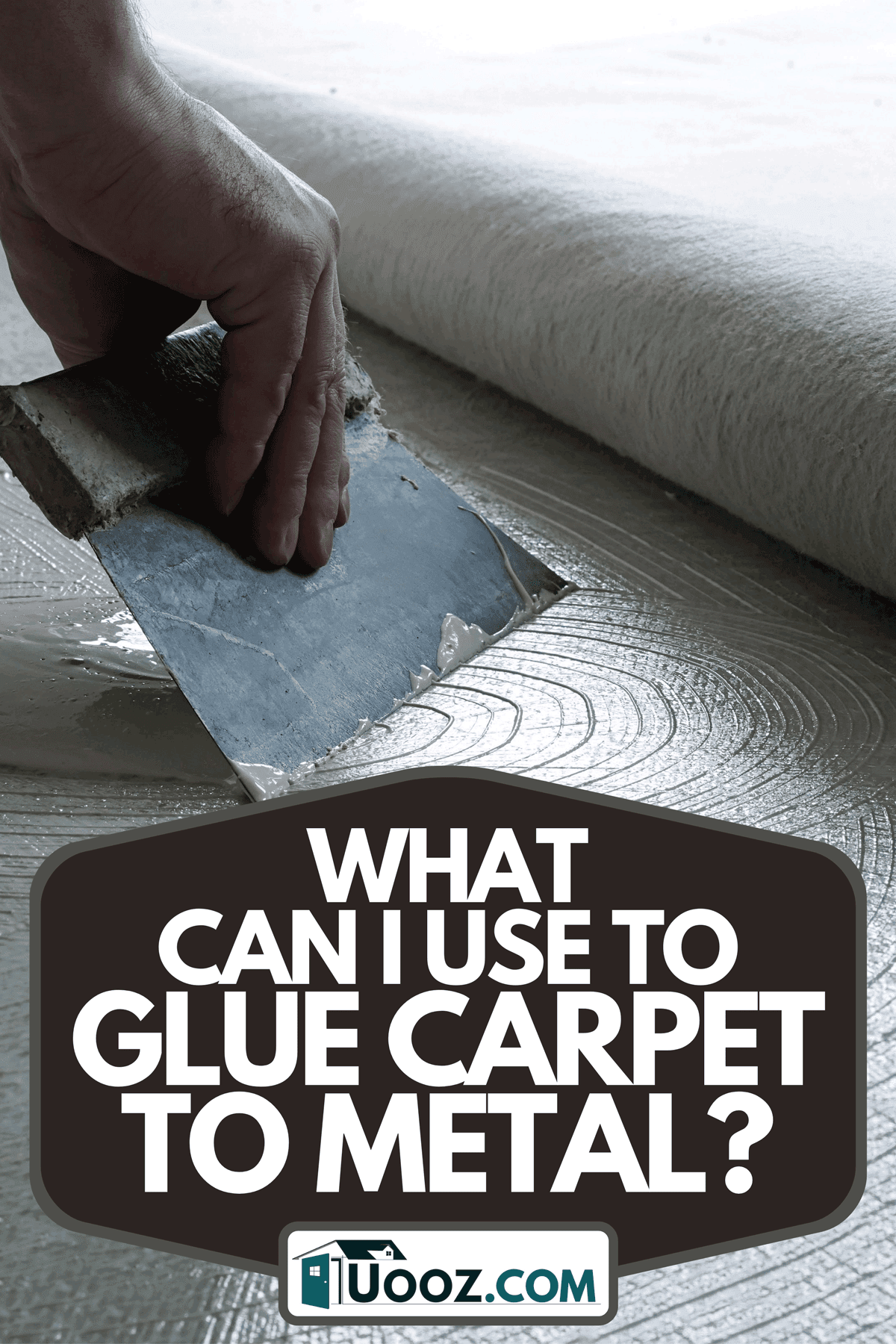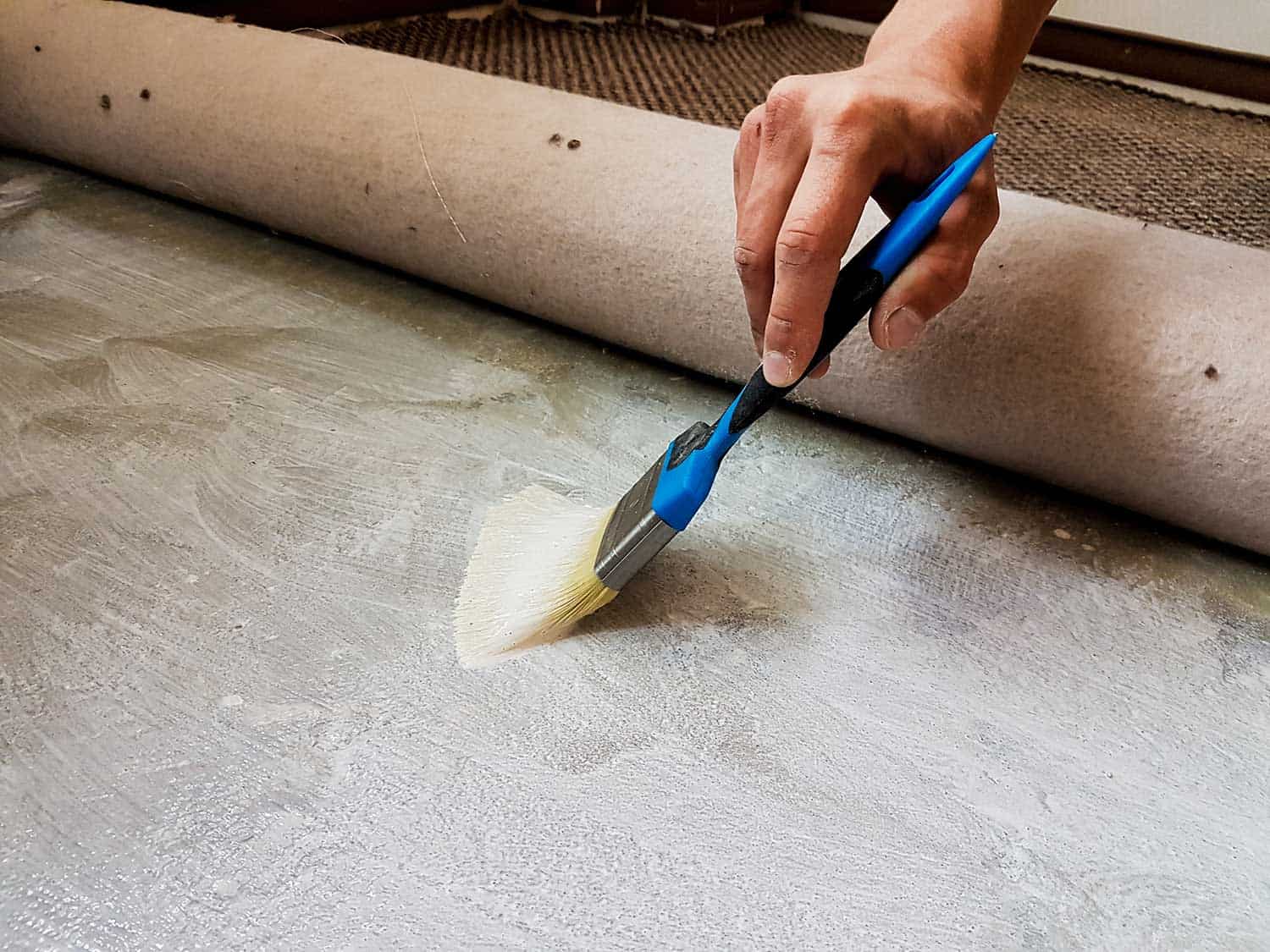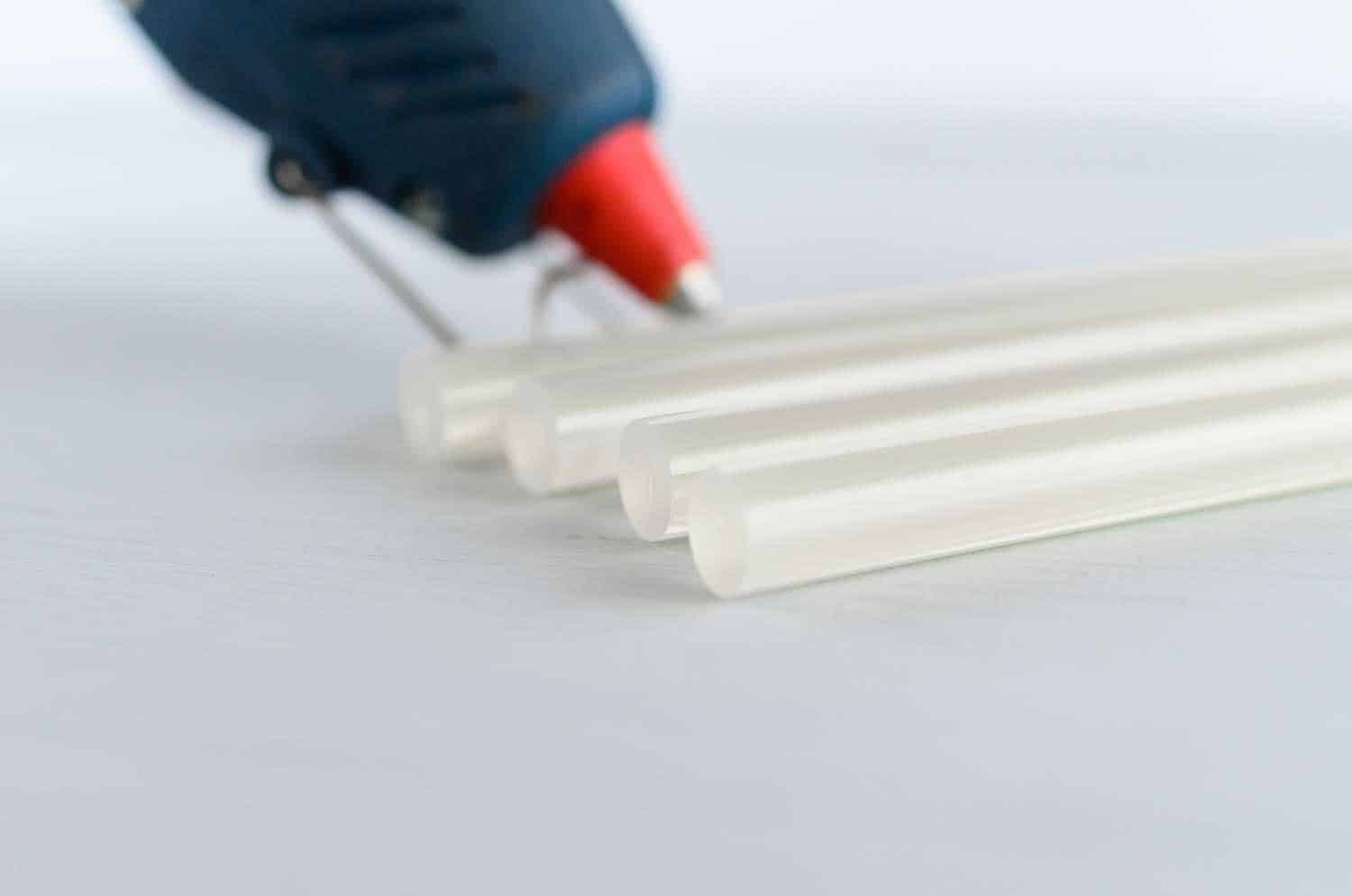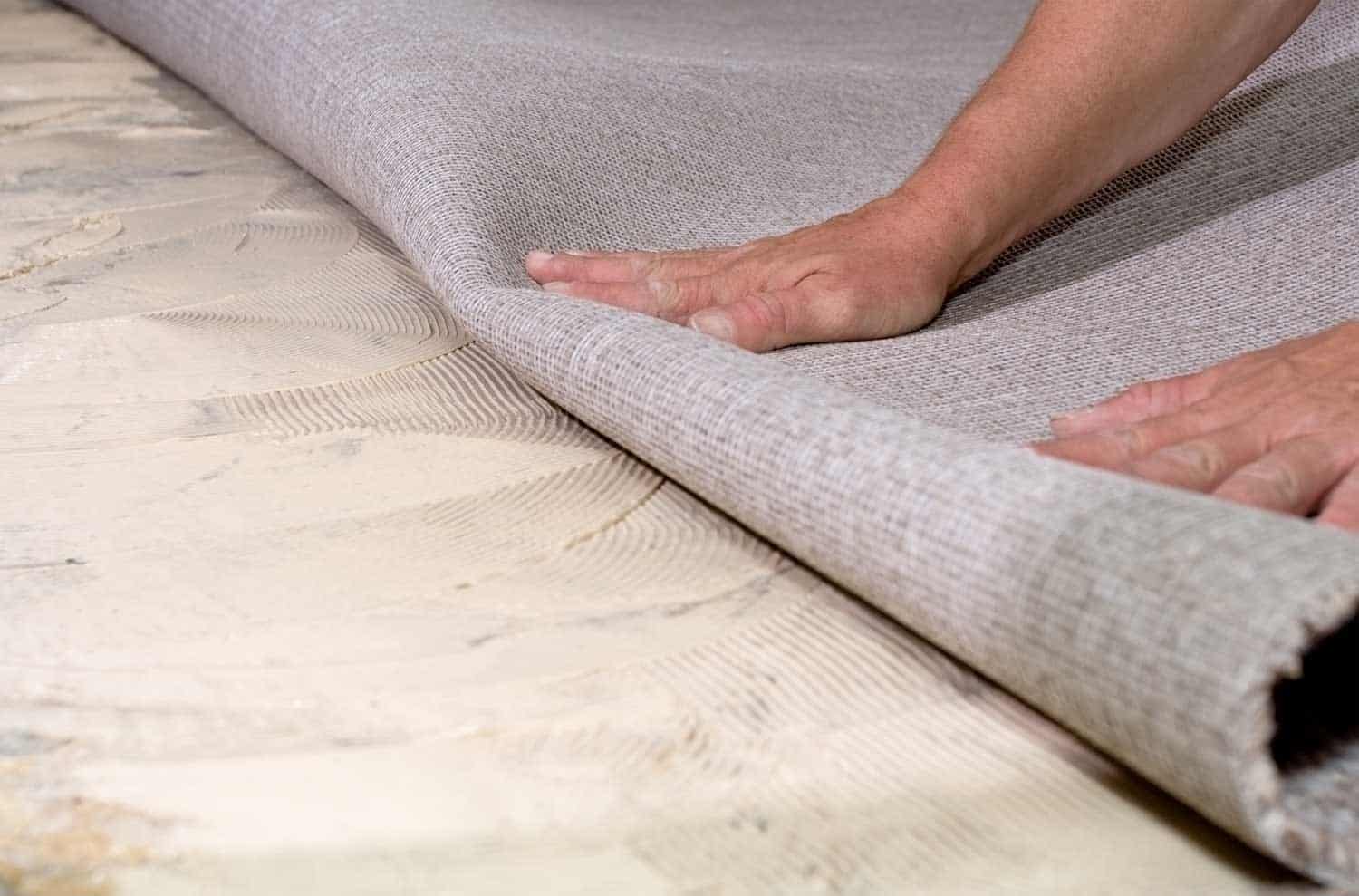Do you have metal surfaces in your home where you would like to have a carpet installed? If you're wondering what you can use to make carpet adhere to steel, aluminum, and other metal bases, we've got the answer for you. We've asked carpeting experts and here's their answer.
It is recommended that you use contact cement, epoxy for metal, superglue, polyurethane glue, or Liquid Nails when you want to glue carpet to a metal surface. These adhesives have the strength and the ability to withstand different environmental factors that'll make them effective in making your carpet stick to metal securely.
Keep on reading so we can tell you more about which adhesives you can use to install carpet on metal surfaces. We'll also answer if you can use Liquid Nails and hot glue for this task. This article will also discuss if you can attach a house carpet to a car. Let's begin!

Does carpet glue stick to metal?
Carpet is usually installed with the help of glue to ensure that it is kept in place. Although there are other modes of installation, such as stretch in and cut to fit methods, many homeowners favor the glue down carpet installation because the material securely fastens to the floor with minimal buckling.
In general, attaching a carpet with glue makes the flooring more durable and anchored firmly to the surface. So, no matter the amount of movement that happens, you can be confident that the carpet won't be displaced, buckle, or ripple. Aside from being unsightly, a wrinkled carpet can be a cause for accidents and can render your carpet unusable over time.

A common concern, however, is the kind of glue that you have to use during installation. In general, any kind of adhesive can be used. But of course, we all know that not all adhesives are created equal. They have different levels of strength and will work more effectively on particular surfaces.
When it comes to gluing carpet on metals such as steel and aluminum, which are commonly used in homes, there are different factors that you need to consider. Metals have a smooth and non-porous surface. This makes them special because they offer little or no grab to help another material stick to them better.
Metals are also usually used outdoors so the kind of adhesive that you have to use must be able to withstand extreme weather and environmental conditions.
Good thing, there are glues that can stand up to these challenges, making it possible to successfully bond carpet to metal. Here are some of the recommended adhesives that you can use.
Contact cement
Contact cement can be used specifically for metal and carpet, among other applications. It is easy to spread over large surfaces and works well on non-porous exteriors as well. It is also water-resistant, which makes it great when you have to install the carpet on the stairs outside your front door.
Click this link to find this product on Amazon.
Epoxy for Metal
This form of adhesive has two parts - the resin and hardener. These two will be mixed together with equivalent proportions so that they can be the super strong glue that you need for your metal surfaces. It takes epoxy quite some time to set and cure, but after this, it has high tensile strength and is able to endure high temperatures.
Check out this product on Amazon.
Polyurethane Glue
This kind of glue can withstand extreme temperatures. It is also waterproof. These qualities are exactly what you're looking for if your carpet installation is outdoors. It forms a very strong bond between metal and carpet. As you apply polyurethane glue, it'll expand for additional strength.
Superglues for Metal
Superglues or cyanoacrylate come in high-strength and increased impact versions that'll be able to bond metal to carpet effectively. These are easy to use, fast-setting, quick-drying, and long-lasting. However, superglues are only recommended for use on small surfaces, so better reserve this for your carpet repairs.
Check out this link to find this product on Amazon.
These are just some of the adhesive products that you can use so that you can be confident that your carpet will adhere to the metal surface properly.
Can I use Liquid Nails for carpet?
Liquid Nails is a brand that manufactures a type of high-temperature adhesive. Makers say that this product works well on multiple surfaces. With the use of advanced moisture-curing polymer technology, Liquid Nails can bond your carpet to metal surfaces quickly and permanently.
Since they only come in squeeze tube packaging, they're only good for small to medium-sized repairs. It won't be practical to use them on large surfaces.
Can you hot glue carpet?

Hot glue is often used to bond different materials together. It requires the use of a glue gun to be able to melt the glue given the right temperature. It is quick-setting and is usually used for crafts and other art projects. It is also used to fill gaps when the surfaces are uneven.
However, hot glue does not stick to just any exterior. It works best on rough or woven materials. It is also not recommended for high-strength applications. This means you shouldn't use this when gluing carpet to a metal surface as it wouldn't give you the result that you're looking for.
Can you use a house carpet in a car?

The carpet in your car serves the important purpose of absorbing the noise that your engine makes. You're not bothered by your vehicle's irritating rattling and clanging sounds thanks to this floor covering that diminishes the noise.
If you want to redo your car's carpeting and want to use a house carpet, you can do so. It'll cost you around $100 to $500 to get this job done in auto shops, but if you do it yourself, you only need to spend around $50 --depending on the type of carpet and size of your vehicle, of course.
You just need to buy a carpet, foam liner, and contact adhesive. There are no special tools needed for this job.
But we won't lie to you. If you're planning to make this a DIY project, it's going to be a physically draining task, but as always, it has its rewards, such as great savings and personal satisfaction for a job well done. You can also choose the design and color of the carpet that you want to install. Who says you should only go with a black carpet after all?
Here's a video that we've found that'll give you an idea of how to get it done.
So, here are the steps if you're up to the task:
- Remove all the interiors of your vehicle and clean it. Use a vacuum to make sure that all the tiny particles are captured.
- Measure the length and width of your car's interior. Add one foot to each side for allowances.
- Transfer the measurements to the foam liner and carpet. Make sure the carpet has its backside facing you. You can also divide them into two --one for the front section and another for the back.
- Cut the foam liner and carpet using razor blades or large scissors.
- Apply contact adhesive on the car's floor and on the backsides of your liner and carpet.
- Allow the contact adhesive to dry before laying the foam liner. Follow the instructions on the label for its proper application.
- Lay the foam liner on the floor of the vehicle. Start from the center and work your way out. Trim the excess and make way for the holes and gears.
- Do the same when you lay the carpet on top of the liner.
- You can use an upholstery steamer to smoothen the carpet over the humps and edges.
That's it! Congratulations on replacing your car's carpet by yourself.
Final Thoughts
Make sure you use epoxy, super glue, contact cement, polyurethane glue, or Liquid Nails when gluing your carpet to a metal surface. Better check the packaging if they are intended to use for metal surfaces so that you can be sure that the product will be effective in getting the job done.
For more resources about carpet flooring, you may visit the following links:






Your information is also very helpful. I have used several glues for boat mats. Using Roberts glue adheres well to concrete, one thing I like is that ist easy to clean with soapy water and does not have a strong smell. Maybe I will look at your information to know more. Thanks for sharing.